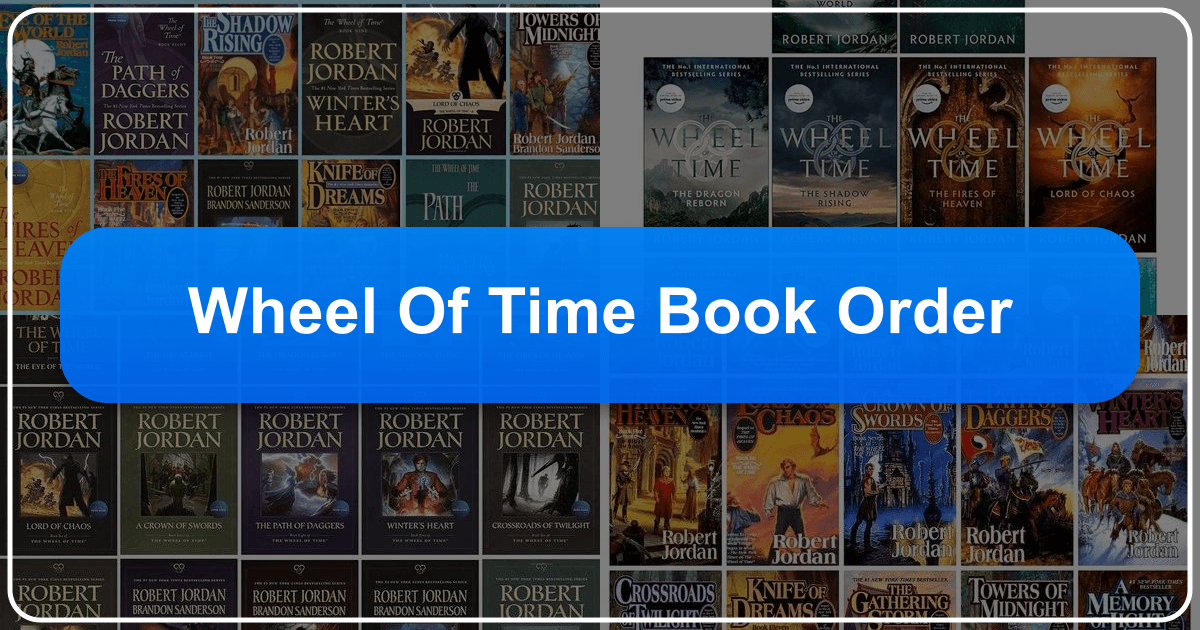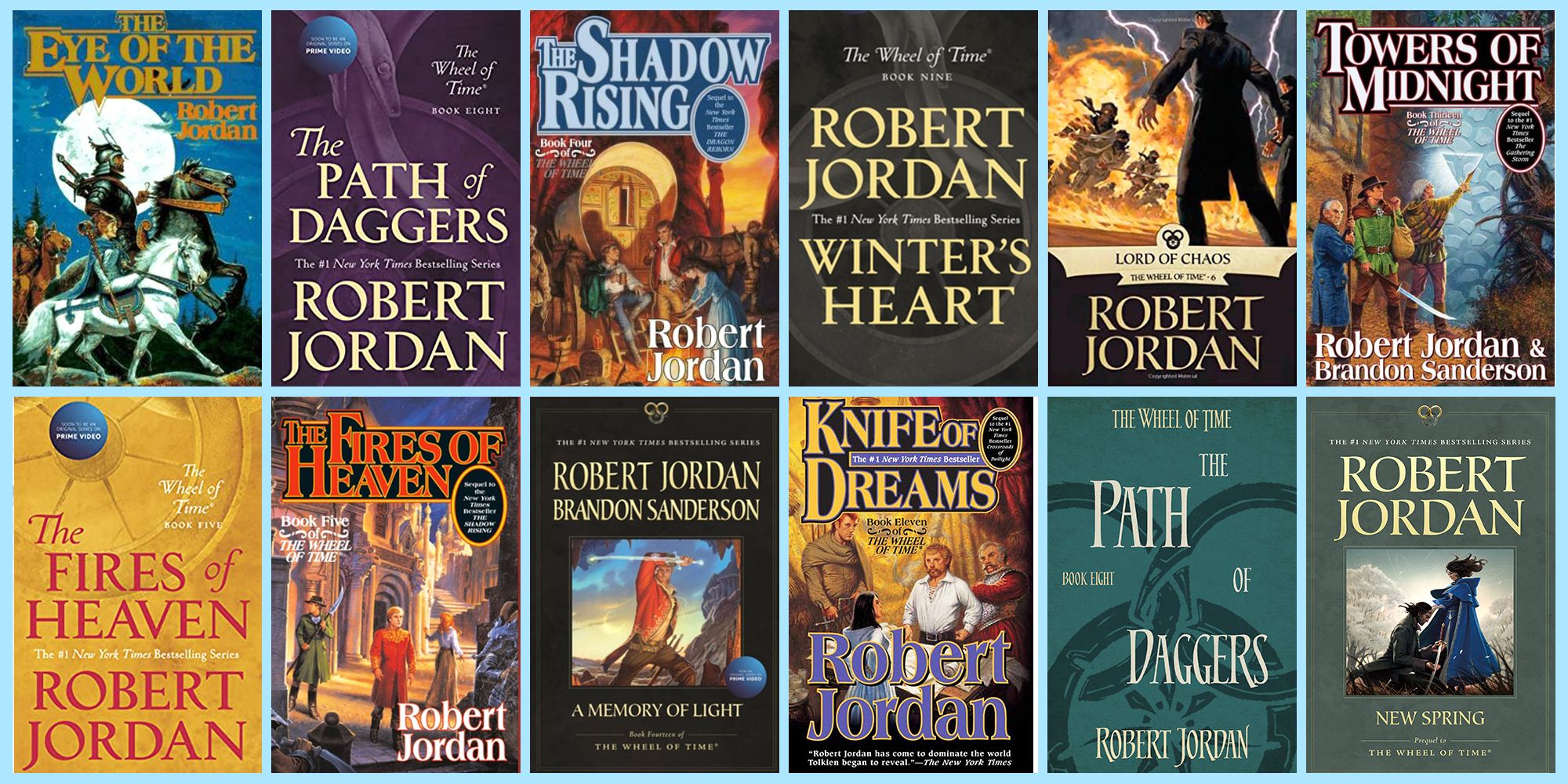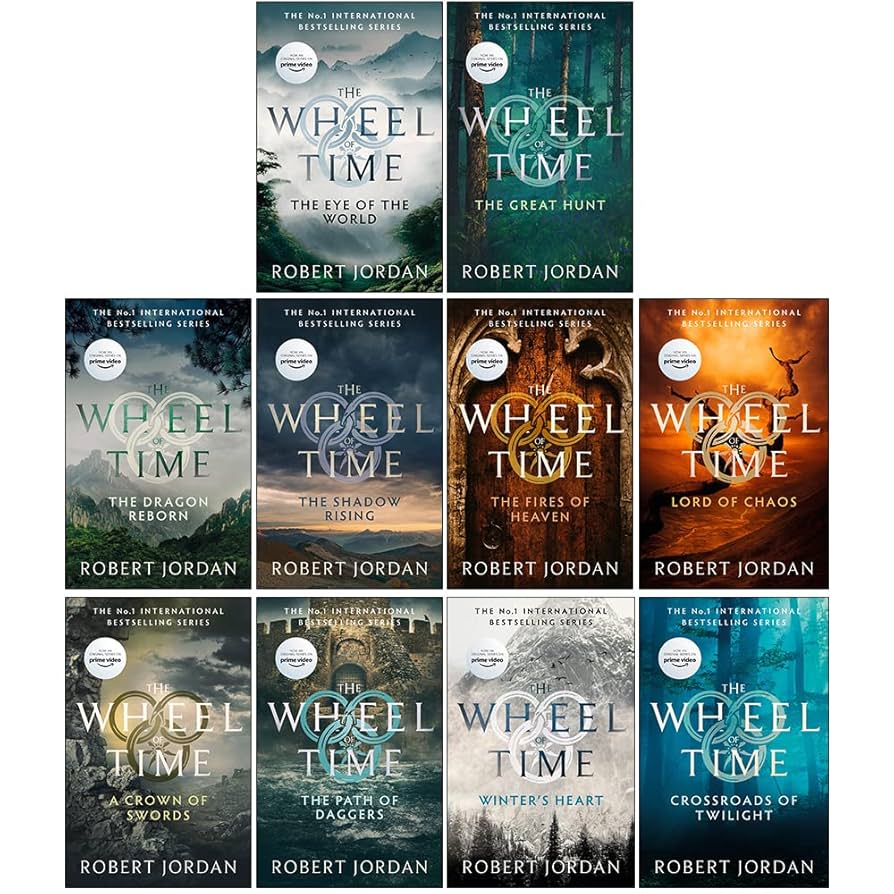Wheel of Time Book Order: A Comprehensive Guide

Robert Jordan’s Wheel of Time series, a monumental achievement in epic fantasy, has captivated readers for decades. Its sprawling world, complex characters, and intricate plotlines have cemented its place in the literary canon, making it a must-read for fantasy enthusiasts. However, the sheer size of the series – 14 books, plus a prequel – can be daunting for newcomers. This guide will provide a roadmap to navigating this epic saga, discussing various reading orders and addressing the infamous “Slog.” We’ll also delve into the series’ broader context, exploring its authorship, literary influences, and enduring cultural impact.
Understanding the Wheel of Time

The Wheel of Time series unfolds in a world steeped in ancient prophecies, magic, and the constant struggle between the forces of Light and Shadow. The story centers around the Dragon Reborn, an individual destined to either save or destroy the world, and the Aes Sedai, powerful female channelers of magic. The narrative spans across multiple continents, diverse cultures, and a vast timescale, creating a rich and intricate tapestry that rewards patient exploration.

The Authorship and its Legacy
Robert Jordan, the creator of this expansive world, meticulously planned every detail of the Wheel of Time. He poured years of his life into crafting this epic, leaving behind a wealth of notes and outlines after his untimely death in 2007. Fortunately, fellow fantasy author Brandon Sanderson stepped in, utilizing Jordan’s extensive notes to complete the final three volumes, ensuring the story’s faithful completion. Sanderson’s dedication preserved Jordan’s vision, delivering a satisfying conclusion to this sprawling tale.

The collaboration between Jordan and Sanderson highlights the collaborative nature of world-building and storytelling. Sanderson, while respecting Jordan’s original work, still brought his distinctive style to the concluding volumes. This transition of authorship is a unique aspect of the series’ history, demonstrating how a story can transcend its single creator while maintaining narrative integrity.
Exploring the Genres and Themes
The Wheel of Time series firmly resides within the epic fantasy genre, sharing similarities with classics like The Lord of the Rings. However, Jordan’s work also subverts many tropes of the genre, offering complex female characters, morally ambiguous choices, and a nuanced exploration of fate versus free will. The story delves into themes of destiny, the cyclical nature of time, the corrupting influence of power, and the enduring strength of human spirit against overwhelming odds. The series draws inspiration from various mythologies and folklore, weaving them into a unique and compelling narrative.
Reading Orders: Publication vs. Chronological
There are two primary ways to experience the Wheel of Time: by publication order or chronologically.
Reading by Publication Order
This method follows the original order in which the books were released:
- The Eye of the World (1990)
- The Great Hunt (1990)
- The Dragon Reborn (1991)
- The Shadow Rising (1992)
- The Fires of Heaven (1993)
- Lord of Chaos (1994)
- A Crown of Swords (1996)
- The Path of Daggers (1998)
- Winter’s Heart (2000)
- Crossroads of Twilight (2003)
- Knife of Dreams (2005)
- The Gathering Storm (2009)
- Towers of Midnight (2010)
- A Memory of Light (2012)
- New Spring (2004) – Prequel
Reading in publication order allows the reader to experience the unfolding of the story as it was initially presented. This mirrors the journey of the original readers, who experienced the anticipation and uncertainty surrounding the series’ completion.
Reading Chronologically
For readers who prefer a strictly chronological narrative, this order is recommended:
- New Spring (2004) – Prequel
- The Eye of the World (1990)
- The Great Hunt (1990)
- The Dragon Reborn (1991)
- The Shadow Rising (1992)
- The Fires of Heaven (1993)
- Lord of Chaos (1994)
- A Crown of Swords (1996)
- The Path of Daggers (1998)
- Winter’s Heart (2000)
- Crossroads of Twilight (2003)
- Knife of Dreams (2005)
- The Gathering Storm (2009)
- Towers of Midnight (2010)
- A Memory of Light (2012)
This approach provides a more linear narrative flow, focusing on the events within the story’s timeline. It might offer a clearer understanding of the character arcs and overall plot progression.
The Wheel of Time: The Slog
The “Slog” is a term used by many Wheel of Time readers to describe books seven through ten (A Crown of Swords, The Path of Daggers, Winter’s Heart, and Crossroads of Twilight). During this section of the series, the pacing slows down considerably. Some argue that the detailed descriptions and seemingly repetitive narratives become a drag on the overall reading experience. Others find this a necessary immersion into the complex world that Jordan had painstakingly created.
It’s important to understand that the “Slog” is subjective. While some readers find the slower pace and detailed descriptions tedious, others appreciate the depth and complexity it adds to the narrative and world-building. The experience of reading through this section might vary depending on individual preferences and expectations. For first-time readers, the anticipation of the story’s later developments might mitigate any sense of slowdown. For rereads, skimming certain sections could become a strategy.
The Cultural Impact of Wheel of Time
Beyond the books themselves, Wheel of Time has had a significant cultural impact. The series has inspired numerous video games, role-playing games, and even soundtracks, all of which have contributed to the expansion of the Wheel of Time universe. A successful television adaptation further extends its reach into mainstream culture, attracting new audiences and reigniting the passion of existing fans.
The series’ literary influence is undeniable. Its impact on contemporary epic fantasy is pervasive, with many authors drawing inspiration from Jordan’s innovative storytelling techniques and imaginative world-building. The sheer scale and complexity of the series have inspired countless other fantasy works, leaving an indelible mark on the genre. The extensive online communities dedicated to discussing the series’ lore, characters, and intricacies serve as proof of its enduring appeal and cultural relevance. The Wheel of Time is more than just a series of books; it’s a shared experience, a vibrant cultural phenomenon that continues to influence and captivate its readers. Lbibinders.org.